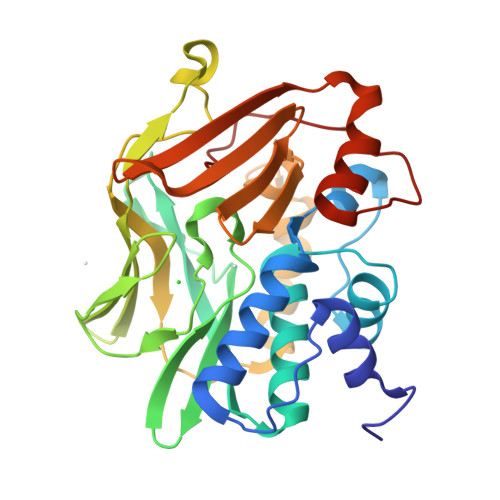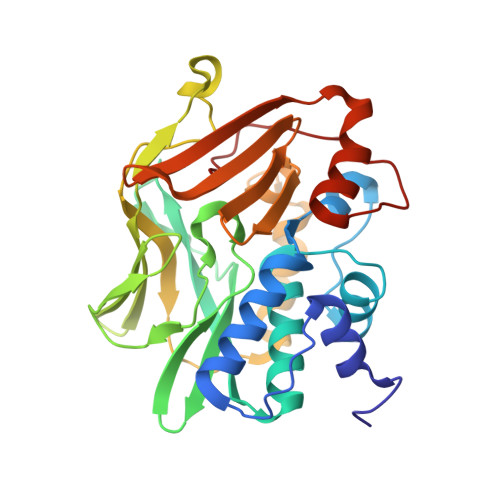Structural Basis of Substrate-binding Specificity of Human Arylamine N-Acetyltransferases.
Wu, H., Dombrovsky, L., Tempel, W., Martin, F., Loppnau, P., Goodfellow, G.H., Grant, D.M., Plotnikov, A.N.(2007) J Biological Chem 282: 30189-30197
- PubMed: 17656365
- DOI: https://doi.org/10.1074/jbc.M704138200
- Primary Citation of Related Structures:
2PQT - PubMed Abstract:
The human arylamine N-acetyltransferases NAT1 and NAT2 play an important role in the biotransformation of a plethora of aromatic amine and hydrazine drugs. They are also able to participate in the bioactivation of several known carcinogens. Each of these enzymes is genetically variable in human populations, and polymorphisms in NAT genes have been associated with various cancers. Here we have solved the high resolution crystal structures of human NAT1 and NAT2, including NAT1 in complex with the irreversible inhibitor 2-bromoacetanilide, a NAT1 active site mutant, and NAT2 in complex with CoA, and have refined them to 1.7-, 1.8-, and 1.9-A resolution, respectively. The crystal structures reveal novel structural features unique to human NATs and provide insights into the structural basis of the substrate specificity and genetic polymorphism of these enzymes.
Organizational Affiliation:
Structural Genomics Consortium, University of Toronto, Toronto, Ontario M5G 1L5.




















